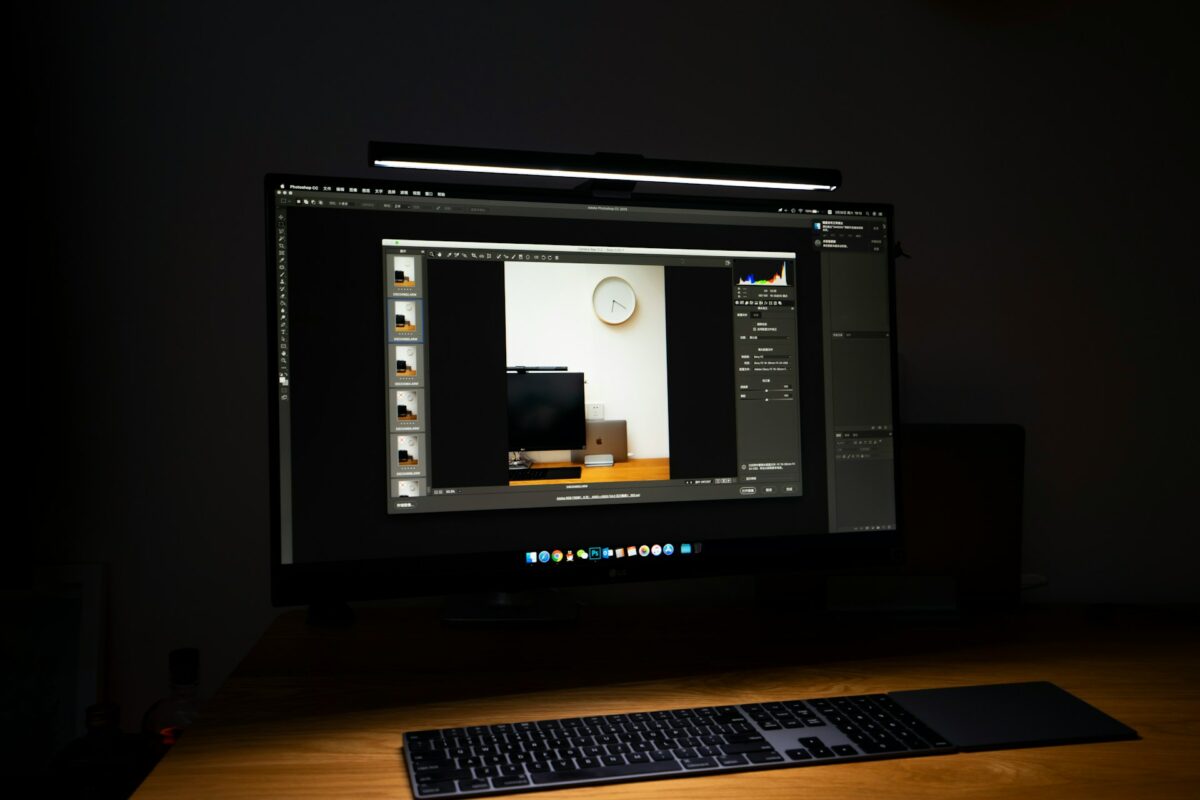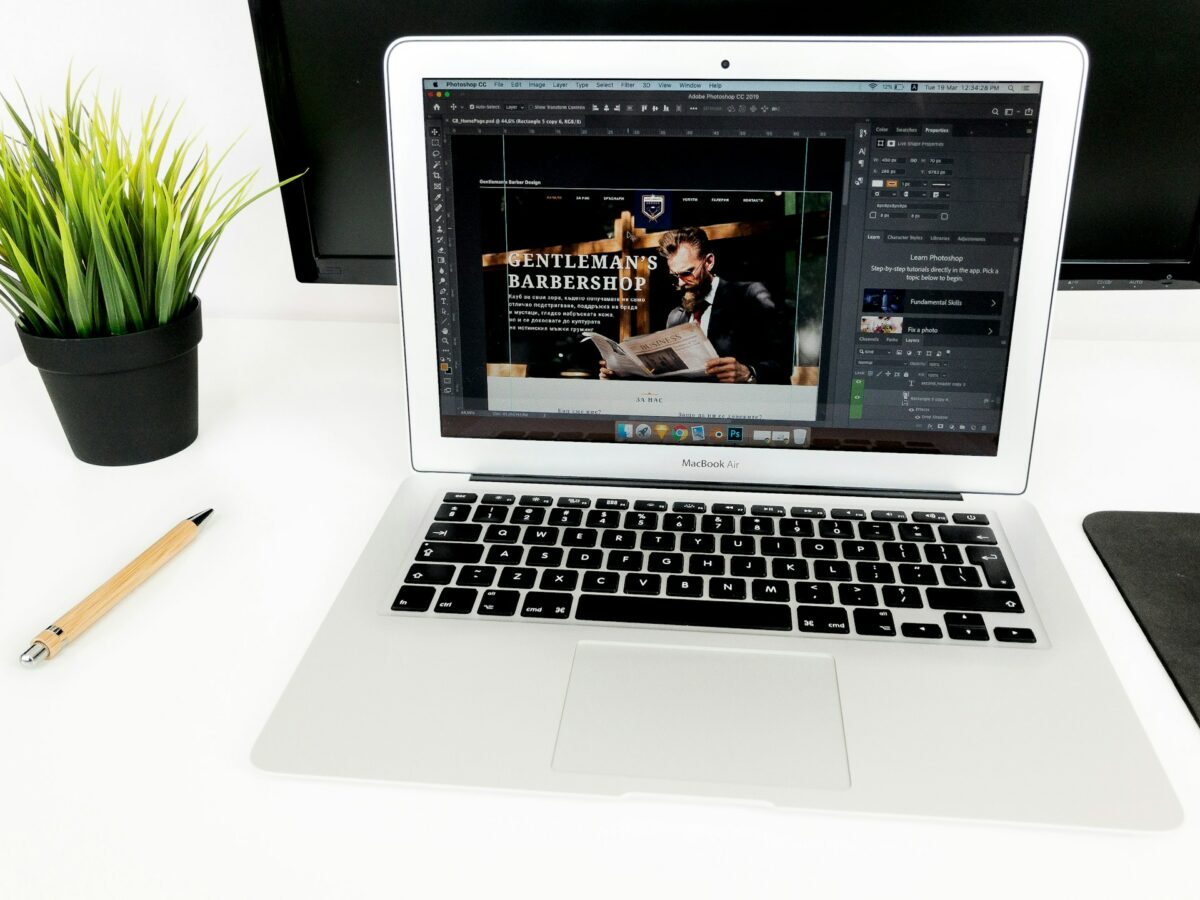When it comes to digital art and picture editing, depth is now one of the most effective visual tools available. An picture that is flat and commonplace is transformed into something that is rich, dimensional, and emotionally captivating as a result of this. In addition to the fact that lighting and perspective contribute to the creation of physical depth, Photoshop provides an artistic method of adding visual depth via the use of Blend Modes and Gradient Maps.
When used in conjunction with one another, these two tools provide you the ability to precisely alter tone, color, and mood, therefore constructing layers of light and atmosphere that give your photographs a sense of presence. Learning how to handle gradient maps and blend modes will give your work the cinematic depth that pros depend on. This is true whether you are working on improving portraits, landscapes, or graphic compositions.
Recognizing the Meaning Behind the Concept of Visual Depth
When it comes to visual depth, distance is not the only factor that matters; how your eye interprets contrast, saturation, and light all plays a role.
The topic is brought to the viewer’s attention while also establishing a feeling of spatial hierarchy. Putting it another way, your brain is able to choose where to concentrate and how to interpret the “layers” of the sight.
Light control, color contrast, and tonal variation are tools that may be used in Photoshop to create the illusion of depth. These aspects are combined via the use of Blend Modes and Gradient Maps, which enables you to manipulate the way in which colors and tones interact with one another without having to physically redraw or re-light your picture.
How Do You Define a Gradient Map?
The tones of a picture may be remapped using a Gradient Map, which is based on a gradient, which is a consistent transition from one hue to another. After analyzing the brightness values of your picture, it replaces them with the colors that you choose in the gradient. The brightness values range from dark to light.
Just one example:
- It is possible for shadows to take on a cool blue or purple color.
- It’s possible that the midtones will turn into warm neutrals or golden highlights.
- There is a possibility that bright regions may become softer creams or mild yellows.
During this procedure, the picture is not only recolored, but it also receives an emotional and atmospheric dimension, which assists you in guiding the perspective of the spectator further.
What Makes Gradient Maps Such an Effective Tool
Gradient Maps, in contrast to color overlays or picture filters, interact directly with the information that pertains to tonal values. This indicates that the end product has a more holistic and realistic feel to it. You are not only altering the hue of your picture; rather, you are influencing the how color behaves inside it.
What makes gradient maps so effective is that:
- They are able to follow the light structure of the picture.
- They contribute to oneness of colors and tones.
- They are able to imitate motion picture color grading.
- They provide a dramatic and immersive quality to digital photos that are otherwise flat.
This method becomes much more adaptable when used with Blend Modes, which opens up a world of possibilities for artistic expression.
The first step is to have your base image ready.
To get started, choose a picture that has a decent range of tonal values, meaning that it has highlights, midtones, and shadows. Launch Photoshop and open it.
You might begin by balancing your picture by using the Levels or Curves tool if it seems to be artificially bright or flat. In order for Gradient Maps to behave in a more natural manner and deliver better outcomes, proper tonal distribution is essential.
Because Gradient Maps depend on tonal range to establish depth, you should steer clear of photos that are too compressed or otherwise lacking in contrast.
Installing a Gradient Map Adjustment Layer is the second step.
Proceed to Layer > New Adjustment Layer > Gradient Map from the menu. Your picture will be accompanied by a new layer that has a preset black-to-white gradient added to it just above it.
Your picture is effectively converted to grayscale via the use of the color mapping system as a result of this action, which instantly maps dark parts to black and bright areas to white. There is no need to be concerned about the loss of color just yet; soon, you will be redefining those tones.
Third, personalize your gradient to your liking.
To access the Gradient Editor, you will need to click on the gradient preview that is located in the Properties panel.
You have the ability to specify your own unique color transitions here. Among the most common pairings for producing depth are the following:
- A cinematic look is achieved by combining deep blue shadows with warm orange midtones and pale highlights.
- With a vintage depth, the green shadows are muted, the midtones are beige, and the highlights are soft cream.
- Charcoal shadows, neutral grays, and dazzling whites are comprised of the dramatic tone.
Focus on gradual alterations rather than dramatic contrasts while conducting your experiments. Always keep in mind that harmony, not saturation, is the source of depth.
When you are happy, click the OK button; your picture will now have a tonal color mapping that has been styled.
The fourth step is to switch the blend mode.
The Gradient Map will cover the whole of your picture by default for you. Modify the Blend Mode of the layer to get a more naturalblending effect.
The following are some of the blend modes that are very useful for producing depth:
- The use of soft light provides a subtle contrast and depth of color.
- Increases the intensity of colors and shadows to create a more striking appearance.
- Color: Replaces colors while preserving the brilliance of the original.
Brightness is affected by luminosity, which does not change the color palette that was used initially.
Each blend mode has a unique way of interacting with the tones that are below it. Experiment with switching between them to see which one best matches the lighting and atmosphere of your photograph.
Next, adjust the opacity to get a subtle effect.
High-impact color effects have the potential to completely dominate the original picture. For more precise control over the strength of your Gradient Map, you may use the Opacity slider.
When it comes to achieving a balanced and convincing appearance, an opacity that falls between 20% and 50% is often sufficient to add richness without seeming manufactured.
You may think of opacity as a knob that controls the depth of the image: lower values make the transition more subtle, while higher values accentuate the contrast and the emotion of the color.
The sixth step is to control the focus by using layer masks.
Adding a Layer Mask to your Gradient Map will allow you to generate depth that is localized. A soft black brush should be used to paint over parts that you wish to remain lighter or unpainted. Some examples of such areas are faces, focus items, and foreground components.
You will be able to replicate depth of field using this system. In order to create the impression that your picture is organically layered, for example, you may reduce the intensity of the gradient effect in the background while maintaining its intensity in the middle area.
You are able to control the focus of the viewer by using masks, which ensures that the viewer’s eye goes precisely where you want it to.
Multiple gradient maps are stacked in the seventh step.
Complication is often the home of depth. When you want to create subtle tones, you may construct them by layering numerous Gradient Maps that have distinct color schemes and mix modes.
As an example, one Gradient Map may be used to create an overall warm atmosphere by using Soft Light, while another could be used to provide chilly shadows by employing Color or Overlay. Modify the opacity of each layer until they blend together in a beautiful manner.
By simulating the way light interacts with surfaces in the actual world, this approach creates layers of warm and cold reflections that provide the impression of depth and an authentic appearance.
In the eighth step, you will refine the blend mode interactions.
Blend Modes are the place where one’s creative potential flourishes. When you combine Gradient Maps with other layer types, such as Curves, Solid Color Fill, or Selective Color, be sure that each of these layer types is set to a separate blend mode.
Just one example:
- When molding the basic tone, a Soft Light Gradient Map should be used.
- To make the shadows more intense, add a Multiply layer.
- Reintroducing highlights may be accomplished by placing a Screen or Overlay layer.
It is possible to achieve controlled dimensionality by layering these modes in a strategic manner. This allows the subject to seem as if it is integrated within its lighting environment rather of appearing to be pasted on top of it.
Step Nine: Apply Adjustment Layers to Complete the Detailing of Your Project
Adjustment layers like as Color Balance, Vibrance, and Curves may be used to further modify the overall tone after your depth appearance has been brought into harmony.
Use color balance to bring the colors of the shadows and highlights into harmony with one another, so guaranteeing that the transitions seem natural. In order to prevent results that are too digital, slightly reduce the saturation.
It is important to keep in mind that the fundamental measure of visual depth is realism, not the number of layers, but rather the degree to which each layer adds to the overall effect.
Step Ten: Save the Preset and Use It Again and Again
Save the gradient you’ve created in the Gradient Editor as a custom preset if you come up with a gradient that is exceptionally effective. You will be able to rapidly apply the same level of depth and tone to a number of different photographs or projects thanks to this.
It is possible for your visual identity to be a subtle hallmark that distinguishes your style, and consistency in gradient mapping and blending may become a component of that identity.
Avoiding the Most Frequent Errors
Utilizing excessive gradients: Colors that are too intensely contrasted disrupt the flow of tonal values and seem unnatural.
- As a result of skipping masks, the application of effects flattens rather than improves the depth of the image.
- Ignoring the direction of the lighting: Gradient tones should be respectful of the light source that is already present in the picture.
- Excessive saturation: True depth is achieved via the regulation of color harmony rather than through intensity.
- It is the subtlety that differentiates good color grading from editing that is done with a hard hand.
Determining the Form of Light Through Color
It’s not only about shadows or perspective when it comes to creating depth in Photoshop; more importantly, it’s about feeling. Through the use of Gradient Maps and Blend Modes, you are able to paint with light and shape with color, so changing everyday photos into narratives that include contrast and space.
Each and every gradient that you create is a conversation between the environment and the tone. Through the process of learning how to balance these tools, you will begin to grasp one of the most creative qualities that Photoshop has, which is the capacity to make flat pictures appear alive, dynamic, and timeless.
Depth is not added; rather, it is discovered via the subtle interaction of color, light, and your creative vision.


